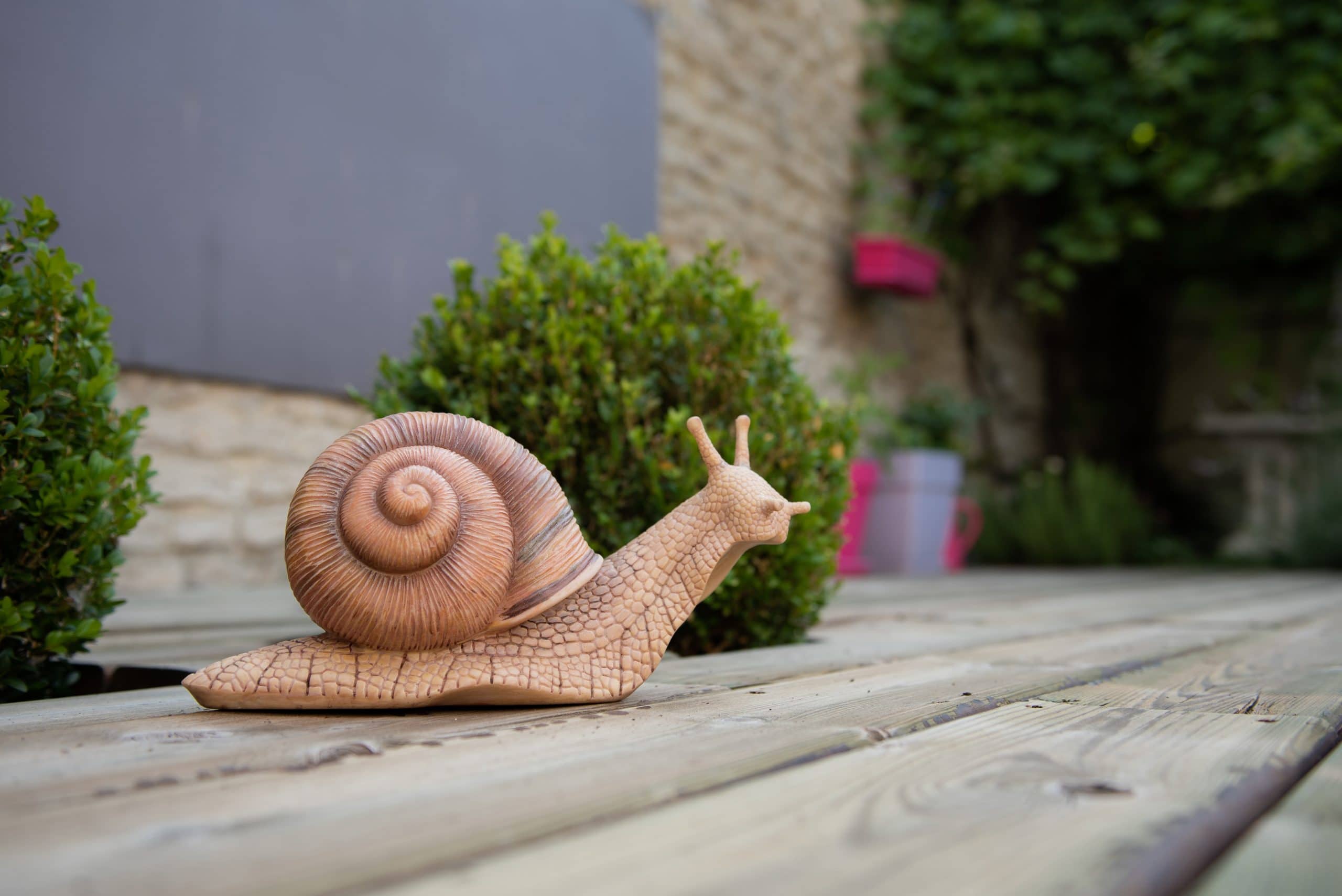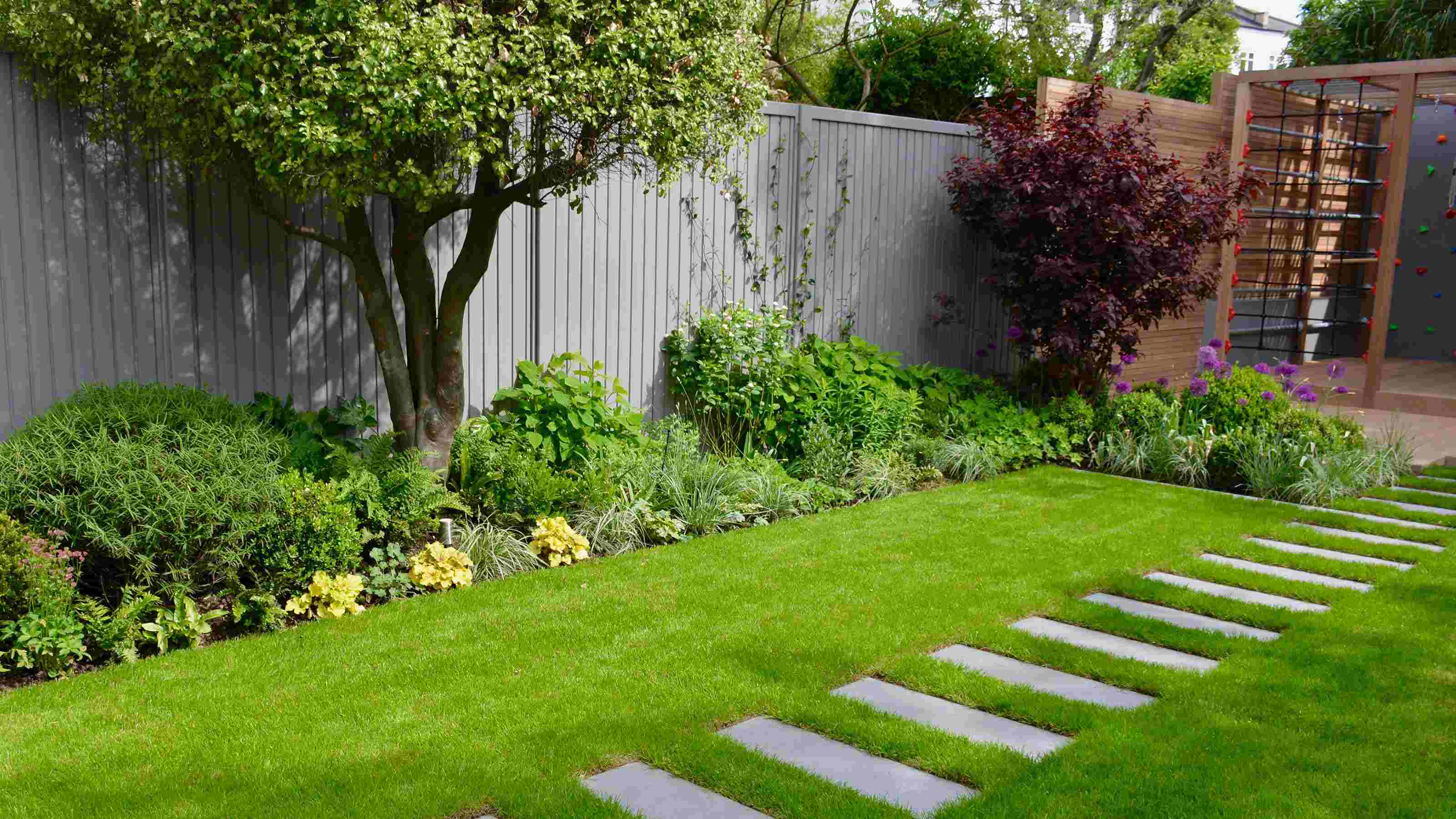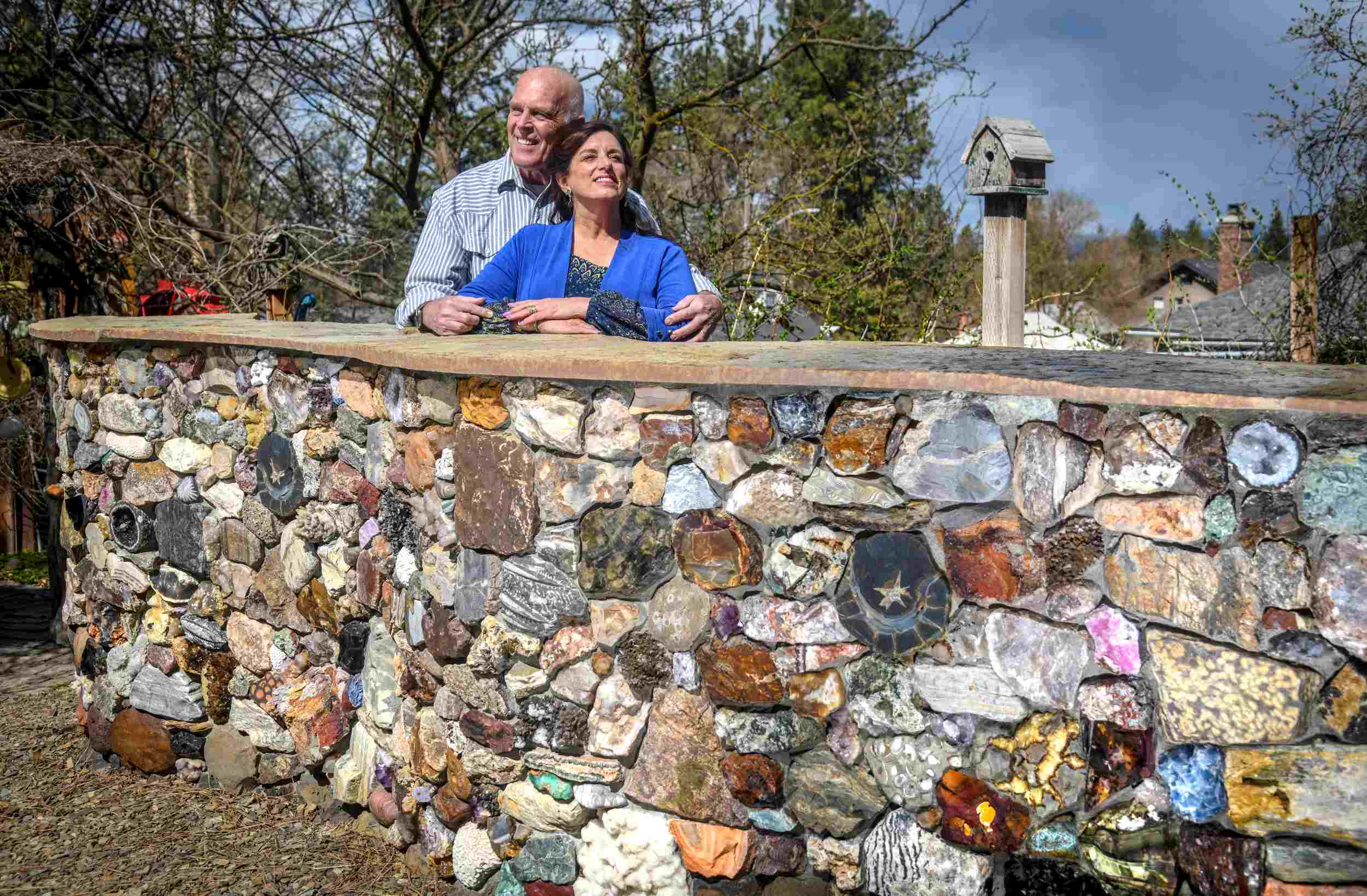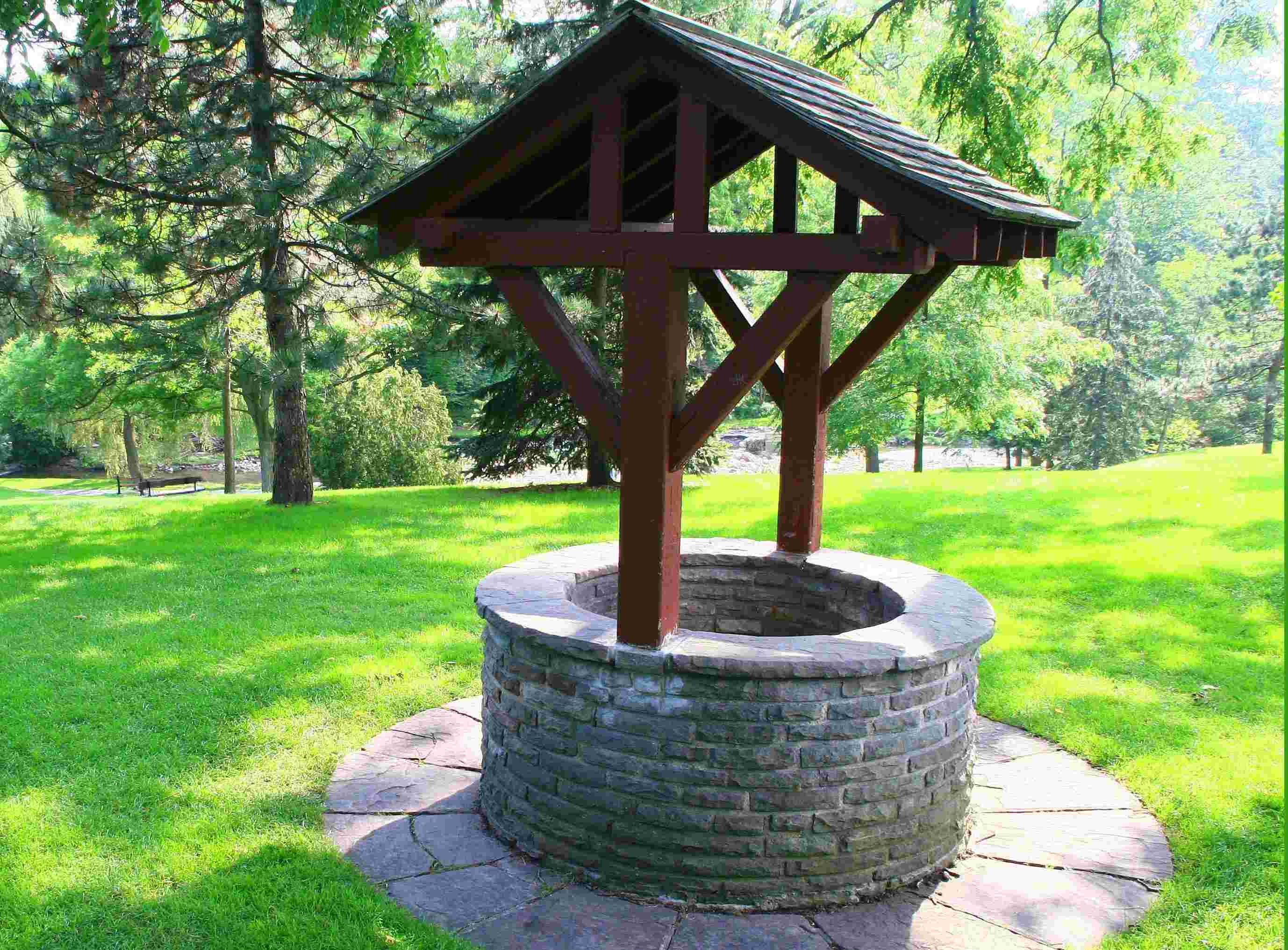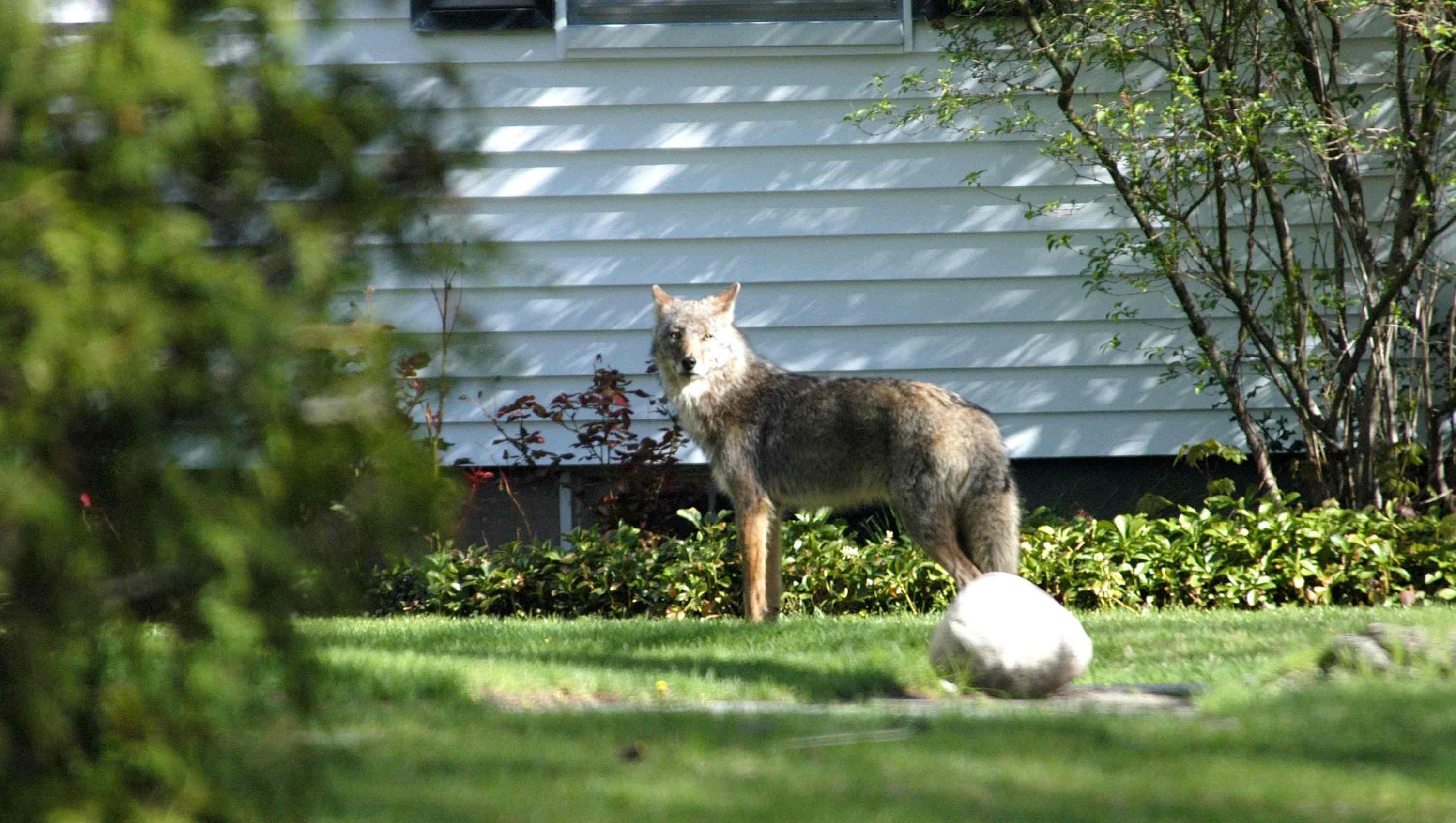Home>Gardening Tips and Tricks>Eco-Friendly Gardening>How To Soundproof Your Backyard
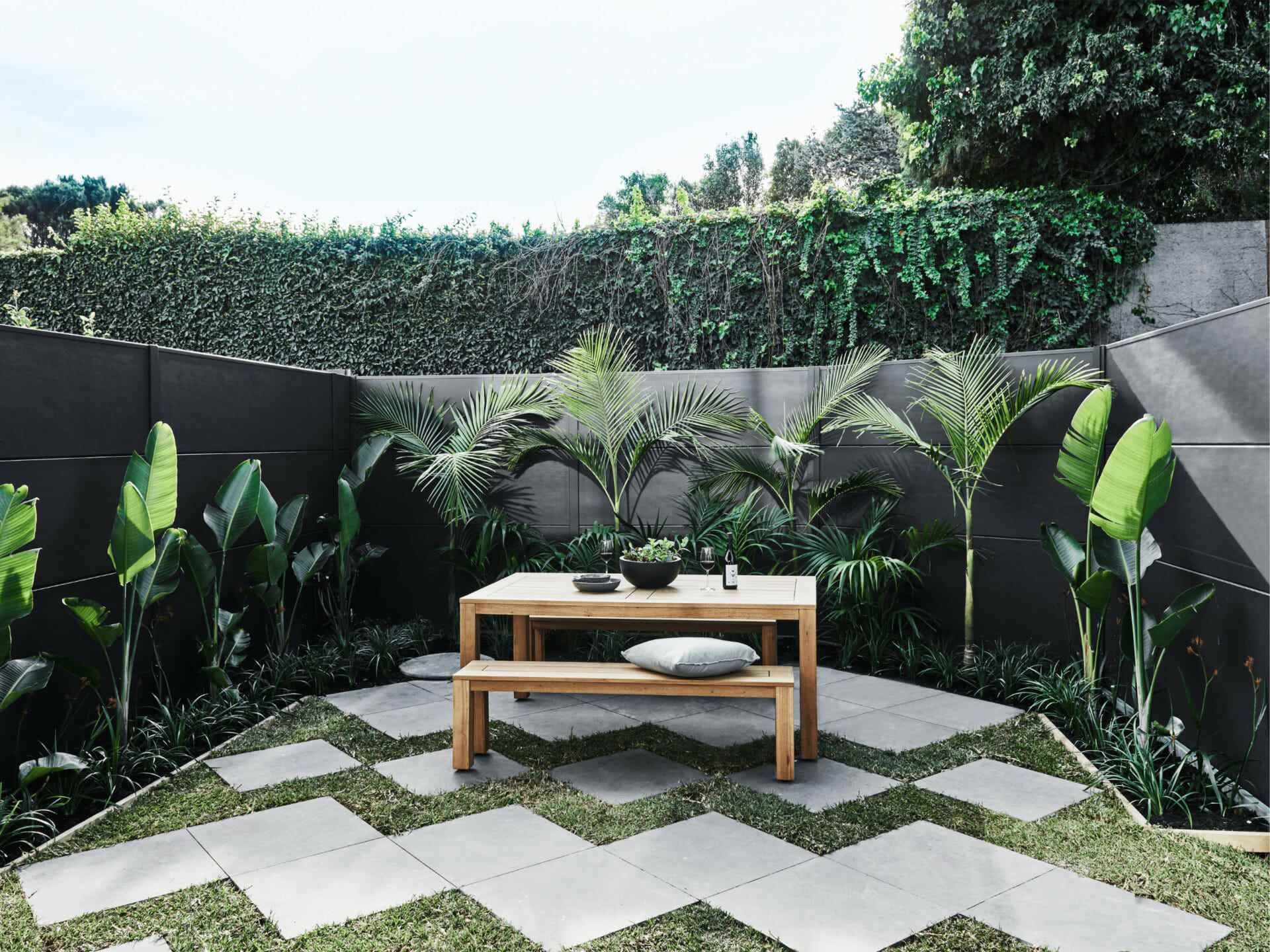

Eco-Friendly Gardening
How To Soundproof Your Backyard
Modified: August 29, 2023
Learn how to create an eco-friendly backyard oasis with our tips on soundproofing your outdoor space. Enhance your gardening experience while minimizing noise pollution.
(Many of the links in this article redirect to a specific reviewed product. Your purchase of these products through affiliate links helps to generate commission for Chicagolandgardening.com, at no extra cost. Learn more)
Table of Contents
- Introduction
- Understanding Noise Pollution in the Backyard
- Assessing the Source and Impact of Noise
- Choosing the Right Soundproofing Materials
- Soundproofing Techniques for the Backyard
- Creating a Barrier with Fencing and Walls
- Using Landscaping to Reduce Noise
- Installing Soundproofing Features for Outdoor Structures
- Soundproofing Tips for Specific Backyard Elements
- Conclusion
Introduction
Welcome to the world of eco-friendly gardening, where you can create a beautiful and sustainable outdoor space while minimizing your impact on the environment. Eco-friendly gardening, also known as sustainable or green gardening, focuses on utilizing natural and environmentally-friendly practices to grow and maintain plants.
In this comprehensive guide, we will explore the various aspects of eco-friendly gardening and provide you with valuable tips and techniques to make your garden a haven for both plants and wildlife. Whether you are a seasoned gardener looking to adopt more sustainable practices or a beginner eager to learn, this article will equip you with the knowledge and tools to create an eco-friendly garden.
Why is eco-friendly gardening important? Well, traditional gardening practices often rely on chemicals, excessive water usage, and non-renewable resources, all of which can have detrimental effects on the environment. By adopting eco-friendly principles, we can reduce pollution, conserve resources, support biodiversity, and create a healthier and more sustainable ecosystem.
In the following sections, we will delve into various topics such as organic gardening, water conservation, beneficial insects, composting, and much more. We will explore how to minimize the use of chemical fertilizers and pesticides, conserve water through efficient irrigation methods, attract beneficial insects to control pests naturally, and utilize compost as an organic soil amendment.
Additionally, we will discuss the importance of choosing native plants that are well-adapted to your region’s climate, as they require less water, are more disease-resistant, and provide essential habitat for local wildlife. We will also highlight the significance of using organic and sustainable gardening practices to enrich the soil, create a healthy ecosystem, and promote plant growth.
Whether you have a small balcony garden, a sprawling backyard, or an urban rooftop oasis, eco-friendly gardening principles can be applied to any space. By implementing these practices, you not only contribute to the preservation of the environment but also create a vibrant and harmonious garden where plants thrive.
So, let’s embark on this journey towards an eco-friendly garden, where we can connect with nature, nurture the planet, and create a sustainable haven for ourselves and future generations.
Understanding Noise Pollution in the Backyard
Your backyard should be a peaceful retreat where you can escape the hustle and bustle of everyday life. However, noise pollution can disrupt the tranquility of your outdoor space. Understanding the sources and impact of noise pollution is crucial in addressing this issue and creating a peaceful environment in your backyard.
Noise pollution can come from various sources, including highways, airports, construction sites, neighboring properties, and even pets. While some amount of noise is inevitable, excessive and prolonged exposure to noise can have negative effects on your physical and mental well-being.
Research has shown that chronic exposure to noise pollution can elevate stress levels, disturb sleep patterns, increase blood pressure, and even lead to cardiovascular problems. It can also affect your ability to concentrate and enjoy outdoor activities.
In your backyard, common sources of noise pollution may include traffic noise, barking dogs, lawnmowers, and loud music from neighboring properties. Understanding the specific sources of noise in your backyard is essential in developing an effective soundproofing strategy.
Additionally, it is crucial to consider the impact of noise pollution on local wildlife. Excessive noise can disrupt the natural behavior and communication patterns of birds, animals, and even insects. By addressing noise pollution in your backyard, you can create a more harmonious environment for both yourself and the wildlife that visits or resides in your garden.
Next, let’s explore how to assess the source and impact of noise in your backyard and identify the most effective soundproofing solutions.
Assessing the Source and Impact of Noise
To effectively address noise pollution in your backyard, it is essential to assess the source and impact of the noise. This step will help you identify the most appropriate soundproofing techniques and materials to effectively mitigate the noise disturbance.
The first step in assessing the source of noise is to spend some time in your backyard during different times of the day. Take note of any recurring noises or periods when noise levels are particularly high. This will help you pinpoint the specific sources of noise that need to be addressed.
Once you have identified the sources, it’s important to consider the impact of the noise on your outdoor activities and overall well-being. Determine whether the noise is simply an annoyance or if it significantly disrupts your ability to relax and enjoy your backyard.
Next, assess the direction from which the noise is coming. This will help you determine the most effective soundproofing strategies. For example, if the noise is coming from a specific direction, you may consider constructing a barrier on that side to block the sound.
Additionally, consider the types of noise you are dealing with. Is it low-frequency noise, such as traffic or machinery, or is it high-frequency noise, such as barking dogs or loud music? Different soundproofing techniques and materials are more effective for different types of noise, so it’s important to understand the specific characteristics of the noise you are trying to combat.
Furthermore, it’s important to consider the local regulations and guidelines regarding noise pollution. Certain areas may have specific restrictions on noise levels. Familiarize yourself with these regulations to ensure that any soundproofing measures you take comply with the law.
By assessing the source and impact of noise in your backyard, you will be better equipped to choose the most appropriate soundproofing techniques and materials. In the next section, we will explore the different options available to soundproof your backyard and create a peaceful and serene space for you to enjoy.
Choosing the Right Soundproofing Materials
When it comes to soundproofing your backyard, choosing the right materials is crucial for effective noise reduction. The soundproofing materials you select will depend on various factors, including the type of noise, the location, and your budget. Let’s explore some of the commonly used soundproofing materials for outdoor spaces:
- Fencing: Installing a solid fence can be an effective way to block noise and create a barrier between your backyard and the source of the noise. Opt for materials that are dense and heavy, such as concrete, stone, or wood panels, as they can absorb and deflect sound waves. Make sure the fence is tall enough to provide adequate sound insulation.
- Noise-Blocking Curtains: Another option for soundproofing your backyard is to hang noise-blocking curtains or sound blankets. These thick and heavy curtains are designed to absorb sound and reduce its transmission. They can be hung on walls, fences, or other structures to create a sound barrier. Noise-blocking curtains are a flexible solution that can be easily installed and removed as needed.
- Garden Walls: Constructing a garden wall can help to block and deflect noise. Use dense materials, such as concrete or brick, when building the wall. Consider adding a layer of sound-absorbing material, such as acoustic insulation, to further reduce noise transmission. Planting thick vegetation along the base of the wall can also help absorb sound waves.
- Green Screens: Green screens or living walls are an eco-friendly and visually appealing way to reduce noise pollution. These vertical gardens consist of plants that provide sound absorption while adding beauty to your backyard. Choose plants with dense foliage and consider layering different plant species for maximum effect.
- Soundproofing Paint: Soundproofing paint is specially formulated to dampen sound waves and reduce noise transmission. It contains sound-absorbing ingredients, such as rubber or ceramic microspheres, that help absorb and scatter sound. Apply the soundproofing paint to walls, fences, or other surfaces to provide an additional layer of noise reduction.
- Paving and Surfacing: If the noise in your backyard is due to a hard surface, such as a concrete or stone patio, consider adding a layer of sound-absorbing material. Rubberized or cork pavers can help to reduce echo and vibration noise, creating a quieter outdoor space.
Keep in mind that combining multiple soundproofing materials can often yield the best results. For example, you can combine a solid fence with noise-blocking curtains or a garden wall with a green screen. Experiment with different combinations to find what works best for your specific noise situation.
Before making a final decision, consider the aesthetics, maintenance requirements, and durability of the soundproofing materials. Also, be mindful of any potential permit requirements or homeowner association regulations when installing certain soundproofing measures.
In the next section, we will explore various soundproofing techniques specifically tailored for the backyard environment. These techniques will help you create a peaceful and harmonious outdoor space free from noise disturbances.
Soundproofing Techniques for the Backyard
Now that you have familiarized yourself with the different soundproofing materials, let’s explore some effective techniques to soundproof your backyard and create a peaceful outdoor oasis.
1. Erecting a Noise Barrier: One of the most common and effective soundproofing techniques is to construct a noise barrier between your backyard and the source of the noise. This can be achieved by installing a solid fence or wall made of dense materials, such as concrete or brick. Ensure that the barrier is tall enough and extends the entire length of the noisy area to block and deflect sound waves.
2. Incorporating Natural Elements: Nature itself can provide remarkable soundproofing. Planting dense trees, shrubs, and bushes along the perimeter of your backyard can act as a natural sound buffer, absorbing and diffusing sound waves. Opt for plants with thick foliage and hefty branches to maximize the noise reduction effect.
3. Utilizing Water Features: Water features not only add tranquility and aesthetic appeal to your backyard but can also help mask unwanted noise. The sound of flowing water from a fountain, waterfall, or pond can create a soothing ambiance that effectively masks external noises. Consider incorporating a water feature in areas where noise pollution is a concern.
4. Creating Outdoor Rooms: Designating specific areas in your backyard as outdoor rooms can help minimize noise disturbances. By creating separate spaces for relaxation, dining, or entertainment, you can strategically position these areas to provide a buffer between noise sources and areas where you want to enjoy peace and quiet.
5. Strategic Placement of Sound-Absorbing Materials: Placing sound-absorbing materials strategically throughout your backyard can help minimize noise reflection and transmission. Consider using noise-absorbing materials such as plants, carpets, cushions, or outdoor rugs in areas where noise is most prevalent.
6. Installing Soundproofing Panels: Soundproofing panels made of materials specifically designed for noise reduction can be installed on walls, fences, or structures to provide an additional layer of sound insulation. These panels are typically made of high-density materials that absorb and block sound waves.
7. Using Outdoor Sound Systems: While it may seem counterintuitive, incorporating an outdoor sound system can actually help mask unwanted noise. By playing soothing music or nature sounds, you can create a pleasant audio environment that distracts from external noise sources.
8. Considering the Layout of Outdoor Features: Take the layout of your backyard into consideration when planning your garden design. Opt for features that can help diffuse or absorb sound, such as low walls, pergolas, or outdoor cushions. Experiment with the placement of features to find the most effective noise reduction configuration.
Remember that each backyard is unique, and the effectiveness of soundproofing techniques may vary depending on factors such as the type and intensity of the noise, as well as the specific layout and characteristics of your outdoor space. It may be necessary to combine multiple techniques to achieve optimal noise reduction.
In the next section, we will explore how you can create a soundproof barrier using fencing and walls in more detail.
Creating a Barrier with Fencing and Walls
Creating a soundproof barrier using fencing and walls is a practical and effective way to reduce noise pollution in your backyard. Whether you’re dealing with traffic noise, noisy neighbors, or other external sources, constructing or modifying existing fencing and walls can help create a more tranquil outdoor environment.
1. Choose the Right Materials: Opt for dense and solid materials when selecting or constructing fencing or walls. Materials like concrete, stone, or brick are excellent choices as they can absorb and deflect sound waves. Avoid materials with gaps or openings that can allow sound to pass through.
2. Height and Width: The height and width of your fence or wall are key factors in its effectiveness at reducing noise. A taller barrier will block and deflect sound waves better than a shorter one. Additionally, extending the fencing or walls along the full length of the noisy area will provide better overall noise reduction.
3. Consider Double Walls or Layering: For maximum noise reduction, consider constructing a double wall or layering materials. This technique involves creating two parallel walls with an air gap between them, which can further absorb and block sound waves. The air gap acts as an additional sound insulation layer.
4. Add Mass and Density: Increasing the mass and density of your fencing or walls can significantly improve their soundproofing abilities. Consider using soundproofing materials or adding a layer of acoustic insulation to enhance the barrier’s effectiveness at blocking noise.
5. Minimize Sound Transmission: Pay attention to any potential points of sound transmission through your fencing or walls. Seal any gaps, cracks, or openings to prevent noise from infiltrating your backyard. Additionally, ensure that your fencing or walls are in good condition to minimize any vibrations that can amplify noise.
6. Enhance with Vegetation: Planting vegetation along or around your fencing or walls can provide an extra layer of sound insulation. Choose dense plants with ample foliage to help absorb and deflect sound waves. Consider planting a combination of trees, shrubs, and climbers for maximum noise reduction.
7. Noise-Blocking Finishes: Apply noise-blocking finishes to the surfaces of your fencing or walls to further enhance their soundproofing capabilities. Specialized soundproofing paints and coatings contain sound-absorbing ingredients that dampen sound waves and reduce noise transmission.
8. Design for Aesthetics: While the primary function of your fencing and walls is to reduce noise, don’t forget to consider the aesthetic appeal of your outdoor space. Choose designs and finishes that complement your overall garden theme and create an inviting atmosphere.
It’s important to note that no soundproofing method can completely eliminate all noise; however, utilizing these techniques can significantly reduce noise levels and create a more peaceful backyard environment. Experiment with different techniques to find the best combination that suits your specific noise situation and aesthetic preferences.
In the next section, we will explore how landscaping can be used to further reduce noise pollution in your backyard.
Using Landscaping to Reduce Noise
Landscaping can play a crucial role in reducing noise pollution and creating a serene and peaceful backyard. By strategically incorporating certain elements into your garden design, you can effectively block, absorb, and diffuse sound waves. Let’s explore some landscaping techniques that can help reduce noise:
1. Plant Dense Vegetation: One of the most effective ways to reduce noise is to plant dense vegetation. Trees, shrubs, and hedges with thick foliage can act as natural sound barriers, absorbing and deflecting sound waves. Opt for evergreen varieties to maintain year-round noise reduction.
2. Use a Variety of Plants: Incorporate a mix of different plant species in your garden to maximize noise reduction. Using a combination of trees, shrubs, and groundcovers can create layers of vegetation that further block and absorb sound. Aim for a diverse mix of plant heights, textures, and densities.
3. Focus on Larger Plants: Larger trees and shrubs with broader leaves or thicker trunks are more effective at reducing noise compared to smaller plants. Choose species that are well-suited to your climate and provide ample coverage to create an effective sound barrier.
4. Create a Water Feature: The soothing sound of flowing water can help mask external noise and create a calming ambiance in your backyard. Consider adding a water feature, such as a fountain or a waterfall, to provide an additional layer of noise reduction while adding visual interest to your landscape.
5. Construct Earthen Mounds: Building small, earthen mounds or berms along the edges of your yard can effectively block noise and act as a sound barrier. The berm can be covered with vegetation to enhance its noise-reducing capabilities and blend seamlessly with the rest of your garden design.
6. Install a Sound-Reflecting Barrier: Reflective surfaces, such as a solid wall or fence, can bounce noise back to its source and reduce the overall sound level in your backyard. Consider incorporating a solid, reflective surface into your landscape design to redirect noise away from your outdoor living areas.
7. Use Softscape Materials: Hard surfaces, such as concrete or paving stones, can reflect noise and amplify its intensity. Opt for softscape materials like mulch, grass, and gravel instead, which can absorb sound waves and reduce noise reflection.
8. Combine Landscaping and Soundproofing Techniques: For maximum noise reduction, consider combining landscaping techniques with other soundproofing methods, such as constructing a solid fence or using noise-blocking materials. Integrating multiple approaches can significantly enhance the overall effectiveness of noise reduction in your backyard.
It’s important to note that the effectiveness of landscaping in reducing noise will depend on various factors, including the type and intensity of the noise, the size of your garden, and the density of the vegetation. Experiment with different landscaping techniques to find the combination that works best for your specific noise situation and personal preferences.
In the next section, we will explore how you can install soundproofing features for outdoor structures to further minimize noise pollution in your backyard.
Installing Soundproofing Features for Outdoor Structures
If you have outdoor structures in your backyard, such as sheds, pergolas, or gazebos, you can take steps to soundproof them and create a quieter and more peaceful environment. Here are some soundproofing features you can install for your outdoor structures:
1. Insulation: Insulating the walls, roof, and floor of your outdoor structure can significantly reduce noise transmission. Use materials such as acoustic insulation or foam panels to absorb sound waves and minimize their transfer. Install the insulation in the cavities of the structure, ensuring a secure and tight fit.
2. Weatherstripping and Sealing: Seal any gaps, cracks, or openings in the structure to prevent noise from entering or escaping. Attach weatherstripping to doors and windows to create a tight seal when closed. Use caulking or sealant to seal gaps between wall panels or other structural elements.
3. Soundproofing Blankets: Hang soundproofing blankets or curtains inside the structure to absorb and block noise. These heavy and dense blankets can effectively reduce noise transmission and create a quieter space. Remember to choose fire-resistant blankets when considering this option.
4. Soundproof Doors and Windows: If your outdoor structure has doors or windows, consider replacing them with soundproof versions. Soundproof doors and windows are typically made with multiple layers of glass and have airtight seals to prevent noise from entering or escaping.
5. Sound-Dampening Materials: Install sound-dampening materials on the interior walls of your outdoor structure. These materials, such as acoustic panels or foam tiles, can absorb sound waves and reduce their reflection, making the space quieter. They can be applied directly to the walls or mounted onto removable panels for easy installation and removal.
6. Strategic Placement of Sound-Absorbing Furnishings: Place sound-absorbing furnishings, such as cushions, rugs, or curtains, inside the structure to help absorb and dampen noise. These soft materials can help prevent sound waves from bouncing off hard surfaces and reduce noise reverberation.
7. Soundproof Flooring: If your outdoor structure has a floor, consider using soundproofing flooring materials. Cork, rubber, or carpet can help absorb impact noise and reduce sound transmission. These materials can be installed directly over the existing floor or used as underlayment beneath a new floor covering.
8. Soundproof Ventilation: Adequate ventilation is essential for outdoor structures, but it can also allow noise to enter or escape. Install soundproof vents or ducts with built-in noise reduction features to maintain proper airflow while minimizing noise transmission.
Remember, the effectiveness of these soundproofing features will depend on the size, design, and construction of your outdoor structure, as well as the type and intensity of the noise you are trying to mitigate. Consider consulting with a professional for expert advice or assistance in selecting and installing the most suitable soundproofing features for your specific outdoor structure.
In the next section, we will provide additional soundproofing tips tailored to specific backyard elements, allowing you to create a tranquil and noise-free outdoor space.
Soundproofing Tips for Specific Backyard Elements
When it comes to soundproofing your backyard, it’s important to address specific elements that may contribute to noise pollution. Let’s explore some soundproofing tips for common backyard elements:
1. Air Conditioning Units: Air conditioning units can generate loud noise that can be bothersome in your outdoor space. To reduce the noise, consider building a small enclosure or a soundproof box around the unit. Use sound-absorbing materials such as acoustic foam or insulation to minimize noise transmission.
2. Pools and Spas: Pool pumps and spa equipment can create a constant humming noise. Enclosing the equipment in a soundproof enclosure or building a barrier around it can help dampen the noise. In addition, consider using a combination of soundproofing materials and landscaping elements to create a noise buffer around the pool or spa area.
3. Outdoor Entertainment Areas: If you have an outdoor entertainment area with speakers or music systems, be mindful of the volume to prevent noise disturbances to your neighbors. Consider installing soundproof panels or curtains around the entertainment area to contain the sound and reduce noise propagation.
4. Play Areas: Children’s play areas can generate noise from enthusiastic play and laughter. To minimize noise, choose rubber or cork flooring materials that absorb impact noise. Additionally, encourage children to engage in quieter play activities and avoid excessive noise during sensitive hours.
5. Water Features: While water features can provide a calming ambiance, some types may generate noise like splashing or running water. To reduce noise, choose water features with adjustable flow settings and consider using sound-absorbing materials in the basin or fountain to minimize noise reflection.
6. Outdoor Kitchens and Grills: Outdoor cooking areas can produce noise from equipment like grills and ventilation systems. When designing these areas, consider locating them away from quiet zones and utilize soundproofing techniques such as enclosure design, sound-absorbing materials, or positioning barriers to block noise propagation.
7. Pets: If you have pets that generate noise, such as barking dogs, train them to limit excessive noise and avoid leaving them in the backyard for long periods unattended. Additionally, consider installing a soundproof doghouse or positioning pet enclosures away from sensitive areas to minimize noise disruptions.
8. Traffic Noise: If your backyard is close to a busy road or highway, creating a barrier between your outdoor space and the source of the noise is crucial. Utilize a combination of dense fencing, landscaping, and sound-absorbing materials to block and absorb the traffic noise effectively.
Remember, addressing specific backyard elements may require a combination of soundproofing techniques tailored to each element. Evaluate the unique characteristics of each element and choose the most suitable soundproofing strategies to reduce noise and create a more peaceful outdoor environment.
In the next section, we will conclude our guide with a summary of the key takeaways and the importance of embracing eco-friendly gardening practices in your backyard.
Conclusion
Creating an eco-friendly and peaceful backyard is not only beneficial for you but also for the environment and your overall well-being. By adopting sustainable and soundproofing practices, you can create a haven where you can connect with nature, relax, and escape from the noise and stress of everyday life.
Throughout this guide, we have explored various aspects of eco-friendly gardening and soundproofing techniques for your backyard. From understanding noise pollution and assessing its impact to choosing the right materials for soundproofing, we have covered a range of valuable information.
We have discussed how landscaping, with the strategic placement of dense vegetation, water features, and natural elements, can help reduce noise pollution and create a tranquil outdoor space. We have also explored soundproofing techniques for specific backyard elements, such as outdoor structures, air conditioning units, pools, and play areas.
By incorporating these methods and techniques, you can effectively minimize noise pollution and create an environment that promotes relaxation, well-being, and harmony with nature. Remember to choose eco-friendly materials and practices throughout the process to reduce your impact on the environment.
Additionally, embracing eco-friendly gardening practices, such as organic gardening, water conservation, and the use of native plants, can further enhance the sustainability and overall health of your backyard ecosystem.
Whether you have a small urban garden or a sprawling backyard, the principles of eco-friendly gardening and soundproofing can be applied to your outdoor space. Take the time to assess the specific noise sources and impacts in your backyard, and experiment with different techniques to find the most effective solutions for your unique situation.
By creating an eco-friendly and soundproofed backyard, you not only improve your quality of life but also contribute to a healthier and more sustainable environment for yourself and future generations to enjoy.
